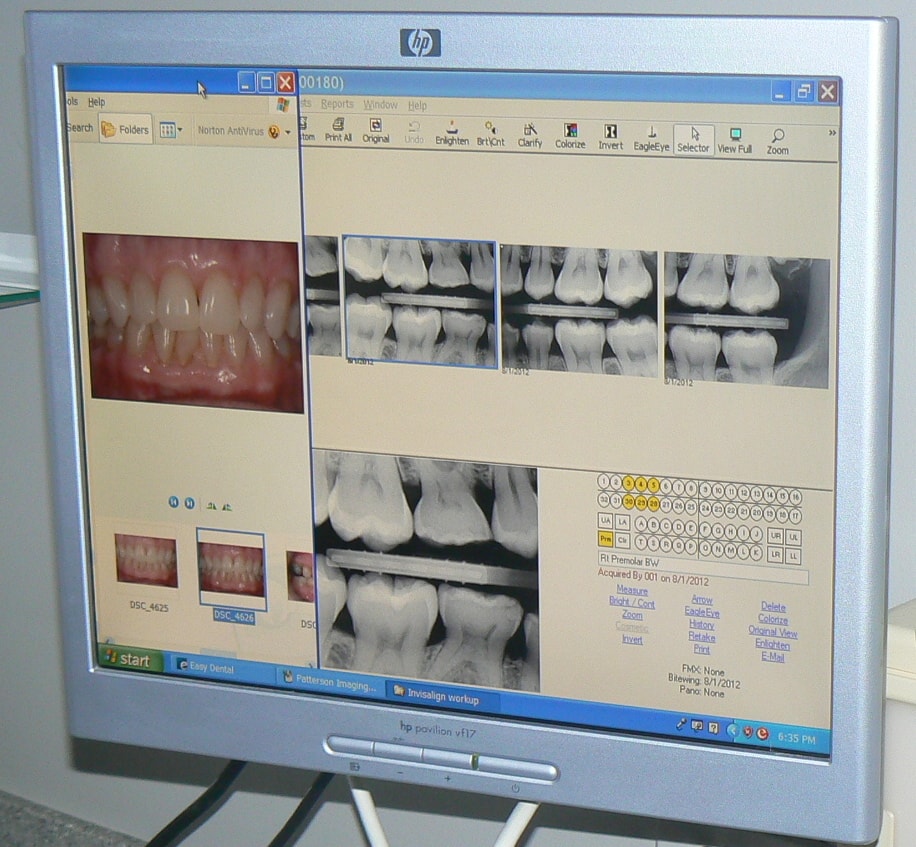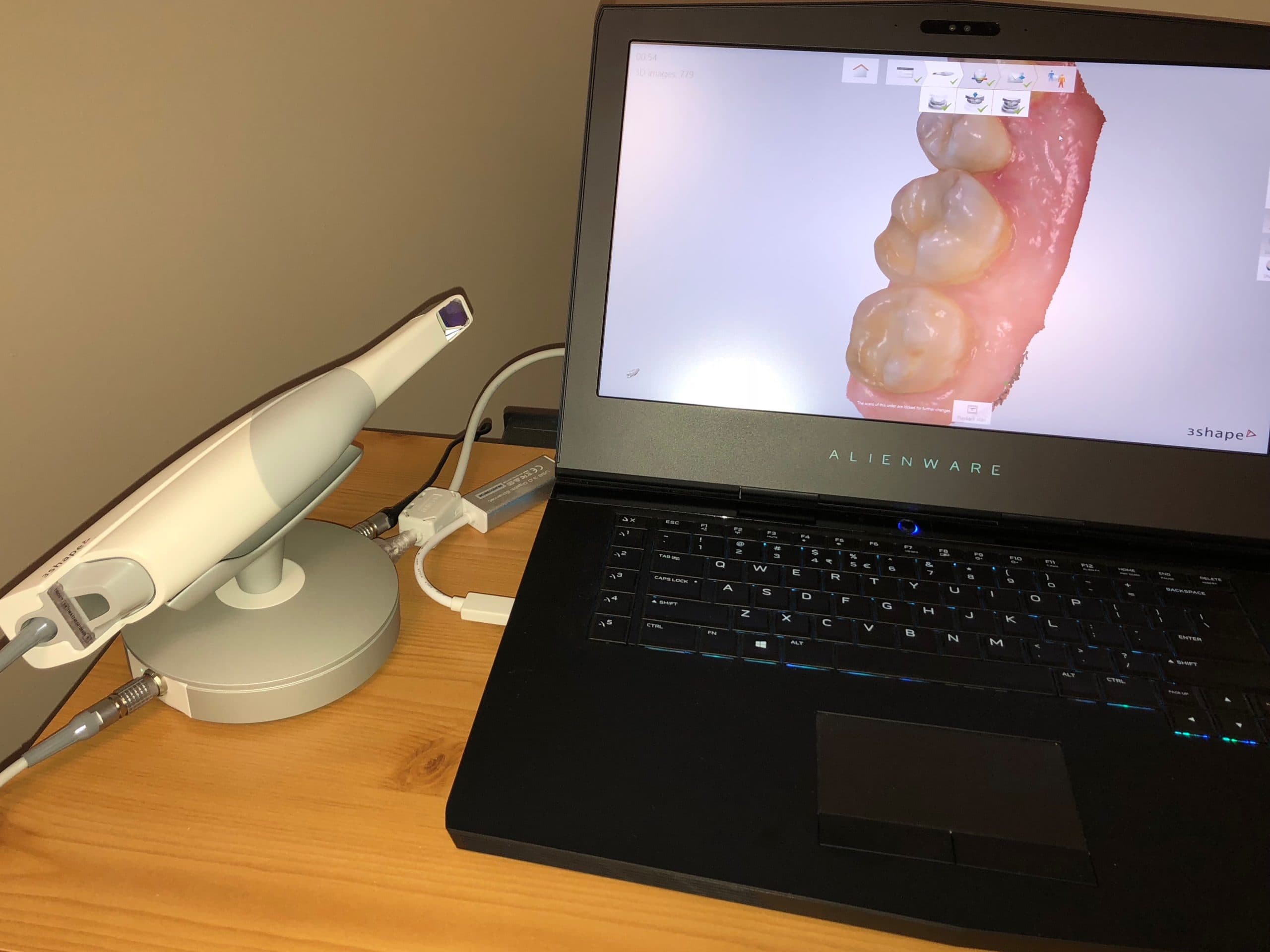Digital Photos and X-rays
The use of computer aided diagnostics has greatly enhanced our ability to communicate to patients both their dental concerns and their treatment options. The two such tools that are most frequently used in our office are digital photography and digital radiography (x-rays).
Using digital photographs, we are able to show patients views of their smile as a whole and also have great views of the shape of their arch (crowding, spacing, etc) as well as close-up views of individual teeth. In addition to being a great tool for patient education, it is an excellent way to document changes in patients’ mouths and send information to laboratory technicians as needed for shade matching and general communication regarding our treatment goals. We can also use photos to communicate with other dentists if needed when we are working as a team on complex treatment plans.

Digital radiography is a way to have x-rays instantly transferred to a computer. As with photographs, using the computer, we can increase the size of the x-ray to help aid in patient education and use viewing tools to enhance the x-rays and improve our ability to diagnose any problems or concerns. In addition, having the x-rays on the computer can help communicate with other dentists. Dental x-rays use very small amounts of radiation as compared to other medical or environmental sources and we take precautions to limit exposures to what is necessary for diagnosis. That being said, digital radiography has been generally shown to require even less exposure to radiation than traditional film x-rays, which is a bonus in addition to all of the other benefits that digital x-rays offer.
Dentistry has changed a lot over the last couple of decades. Computer based photos and x-rays are one of the great tools that we have now to improve patient understanding while helping us deliver excellent care.

Digital Impressions
Using traditional materials to make molds of teeth is a process that had remained unchanged for the most part for decades before the development of digital scanning technology. The old method used various materials that were placed in a tray and inserted into your mouth. It was a messy and unpleasant experience usually, but allowed dentists to accurately make a model of teeth, so that crowns, bridges, dentures, etc. could be custom made to fit a patient's needs.
In recent years, improvements to digital technology have made taking impressions with a scanner more routine and able to accurately provide a 3D image of individual or multiple teeth. This enables digital images to be used to fabricate a digital or 3D model from which an appliance or dental restoration can be made.
Although we still use traditional impressions on some occasions and for certain types of procedures, we are using digital imaging more every day for dental procedures and expect that trend to continue in the future. If you are interested in knowing more about how digital scans can improve your dental experience, feel free to ask.


A beautiful smile could be a gateway to the best things in life
Finding your perfect job, meeting the perfect mate or just feeling good when you look in the mirror. Sometimes, it all starts with a great smile!
